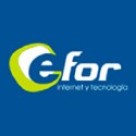IOT barometer (Part 2): The internet of things as a business process
Below, we explain the different factors detected by the Vodafone IoT 2016 Barometer to reach this conclusion:
Companies that have adopted IoT quantify their profits
The study groups these benefits into four categories where, on average, an improvement of 20% has been experienced (see image 1).
In the USA, for example, the increase in revenue is much greater, and 55% of companies talk of improvements exceeding 20%.
21% of the companies surveyed for this study have seen a significant ROI thanks to IoT, and state that their revenues increased by more than 10% in the last year (see image 2).
68% of the companies surveyed stated that they had measurable objectives before starting their project. Given the impact of the Internet of Things, it is reasonable to think that companies adopt it in order to meet management's expectations or to catch up with competitors; however, only 5% stated that they had launched their project without a defined objective. "We analyze and study the cost of the project. From there, we calculate the savings and if everything is favorable, we launch the project. Then we monitor continuously to compare actual savings (or revenues) with initial forecasts," explain the managers of a utility company based in Spain.
Forty-one percent of the companies with the best results commissioned their IoT provider to measure and track. As we see in image 3, the most successful users have involved external suppliers in the three ways highlighted in bold:
One of the Chinese companies surveyed defines this idea very well: "the Internet projects of Things are business processes enabled by the IT infrastructure".
A clear recommendation for companies adopting IoT is that they should not see it as just another IT project, nor use the usual indicators for this environment, they should start by identifying a business process that needs improvement and integrate IoT into the solution.
"We adopted this technology three years ago, wanted to 'discover something' and ended up going around in circles. We had a lot of data, but we didn't know what to do with it. We realized that this had to do with the way we function as an organization. The result is that IoT is seen more as a business change or a business opportunity than as a cost of technology.
IoT project management is linked to processes
On average, however, IoT projects are more likely to be managed locally than other IT projects, as picture 4 shows.
The Internet of Things project must be linked to the business process in question and to the needs of customers and local users. A top-of-the-range car manufacturer based in Germany gave a very clear example: "The content relating to the connected vehicle is increasingly managed locally. For example, in China it is not possible to offer Google. In the United Kingdom, the systems for checking stolen vehicles are different from those in Germany because the legislation is different. In the old world a global car was designed, but the new world of IoT is highly localized.
In conclusion, companies launching IoT initiatives must set strict parameters on what they want to achieve and how to determine success. It's okay to do tests and validations, but there's a risk of not acting on the results.
A new trend, observed in the study, is the figure of the "trusted third party" that supports companies that navigate without clear objectives in IoT and that integrates all the elements of the proposal (devices, connectivity, data and application analytics, etc.) and also intervenes in areas such as security and privacy. And this is one of the areas where the most value is provided by a specialized company such as EFOR.

